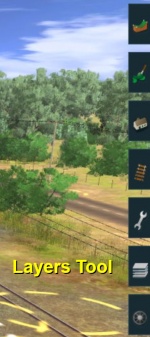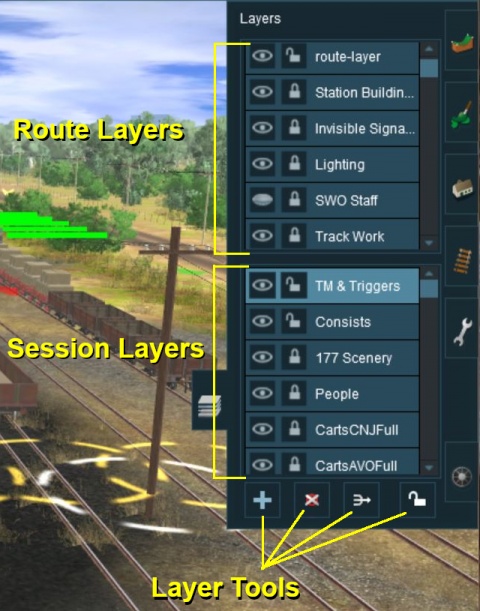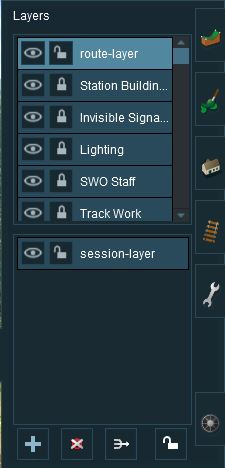How to Use Layers
From TrainzOnline
(Difference between revisions)
(→The Layer Tool) |
|||
| Line 28: | Line 28: | ||
With the '''Layer Tools''' (Add, Delete, Merge and Lock) below them. | With the '''Layer Tools''' (Add, Delete, Merge and Lock) below them. | ||
| − | + | Each section contain multiples layers - the scroll bars next to the layers indicate that there are more layers in each section. | |
| − | + | ||
| − | Each section | + | |
The layers you will see will depend on whether you have loaded into Surveyor a '''Route''' by itself (with no "child" Session) or a '''Session''' and its "parent" Route. | The layers you will see will depend on whether you have loaded into Surveyor a '''Route''' by itself (with no "child" Session) or a '''Session''' and its "parent" Route. | ||
| + | |||
| + | <table> | ||
| + | <tr valign="top"> | ||
| + | <td>[[file:LayersToolsRoute.JPG]]</td> | ||
| + | <td>[[file:LayersToolsSession.JPG]]</td> | ||
| + | <td><br> | ||
| + | *The image on the left shows the layers that will appear if the '''route only''' is loaded into Surveyor. Note that a default '''Session Layer''' is present. This layer may be empty.<br><br> | ||
| + | *The image on the right shows the layers that will appear if a '''session based on that route''' is loaded into Surveyor.<br><br> | ||
| + | |||
| + | In both cases, the '''Route Layers''' are identical because the same route has been loaded. The session contains additional layers, the '''Session Layers''', that are not saved with the route. | ||
| + | </tr> | ||
| + | </table> | ||
Revision as of 21:38, 2 June 2018
The Layer Tool
 |

| Click the Layers Tool to open up its properties. |
The layers are organised into two groups:-
- Route Layers in the top section, and
- Session Layers in the lower section.
With the Layer Tools (Add, Delete, Merge and Lock) below them.
Each section contain multiples layers - the scroll bars next to the layers indicate that there are more layers in each section.
The layers you will see will depend on whether you have loaded into Surveyor a Route by itself (with no "child" Session) or a Session and its "parent" Route.

